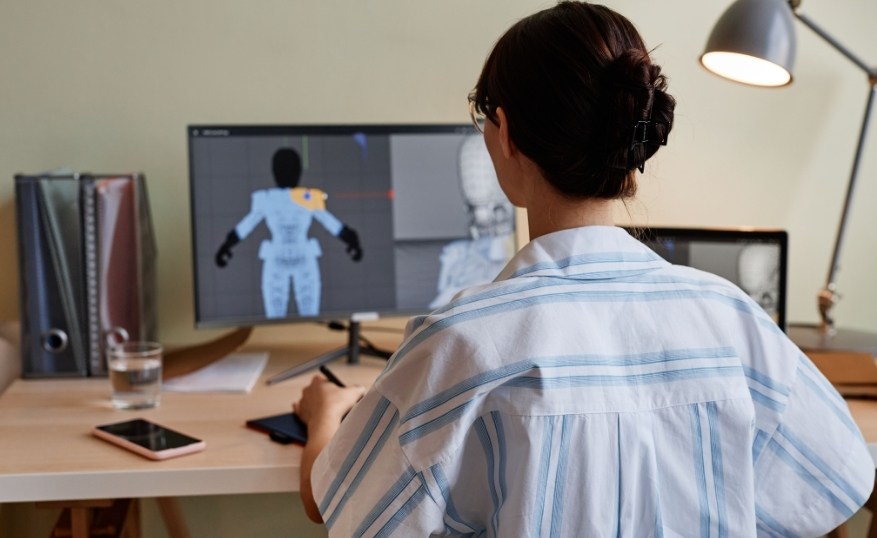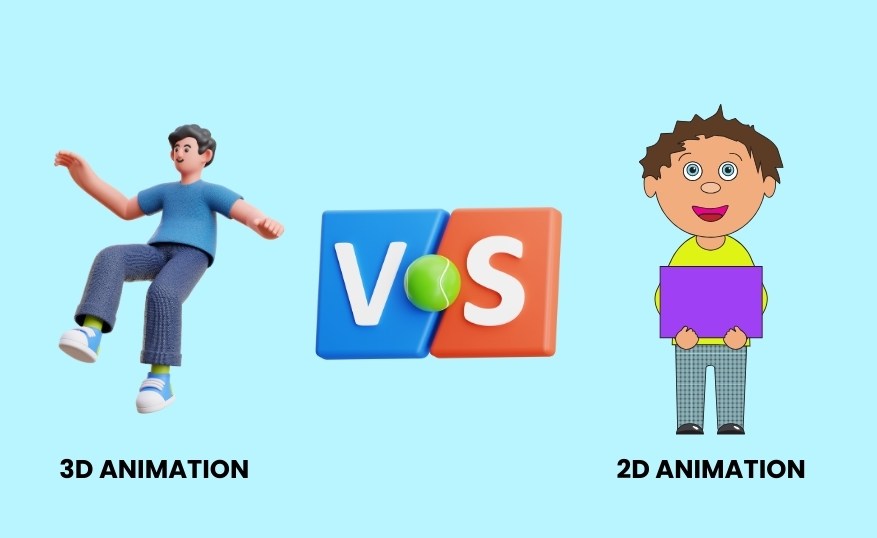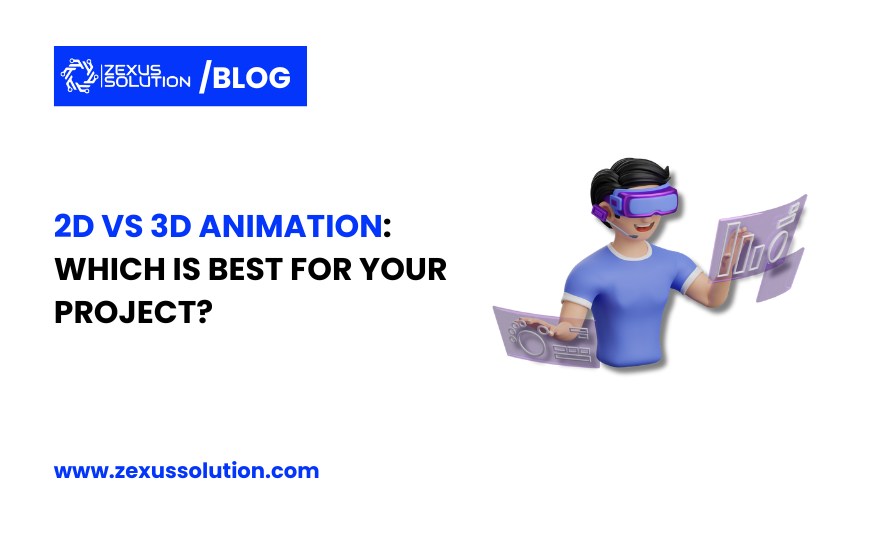Table of Contents
The world of animation is vast and ever-evolving, with two primary styles leading the industry: Professional 2D and 3D animation. Each has its unique attributes, strengths, and areas of application, and choosing between 2D vs 3D animation is a crucial decision for any project. Understanding the differences and knowing when to use each style can help you create the most effective and engaging content.
Understanding 2D Animation

2D creative animations are the traditional style of animation that dates back to the early 20th century. It involves creating images in two-dimensional space, using width and height. The process typically involves drawing frames by hand or digitally and then sequencing these frames to create the illusion of movement.
Strengths of 2D Animation:
Simplicity and Clarity:
2D animation often relies on simple, clear imagery and is highly effective for storytelling and conveying messages succinctly.
Cost-Effectiveness:
Generally, 2D animation can be less expensive than 3D animation. It requires fewer resources and can be completed more quickly.
Artistic Freedom:
With 2D animation, there’s a significant degree of artistic freedom. Styles can vary widely, from realistic to highly stylized, allowing creators to match the animation to the project’s tone and audience.
Applications of 2D Animation:
- Television cartoons and animated series
- Explainer videos and educational content
- Advertising and marketing animations
- Mobile games and apps
Understanding 3D Animation

3D Animation involves creating images in a three-dimensional space, adding depth to the width and height. This process uses computer-generated imagery (CGI) to create models that can be manipulated in a virtual environment. The result is a more realistic and lifelike animation.
Strengths of 3D Animation:
Realism and Detail:
3D animation offers a level of realism that 2D cannot match. The depth and texture make characters and environments appear lifelike.
Dynamic Movement:
The added dimension allows for more dynamic and complex movements. Characters can rotate and interact with their environments in ways difficult to achieve in 2D.
Versatility:
3D animation is highly versatile and can be used in various industries, from film and television to video games and virtual reality.
Applications of 3D Animation:
- Feature films and animated movies
- Video games and immersive simulations
- Architectural visualizations and product modeling
- Virtual reality and augmented reality experiences
Choosing Between 2D vs 3D Animation

The decision between 2D vs 3D animation depends on several factors, including the project’s goals, budget, timeline, and audience. Here are some key considerations to help you choose the best style for your project:
1. Project Goals and Content:
Storytelling:
If your project relies heavily on storytelling and character-driven narratives, 2D animation might be more suitable. Its simplicity can make it easier to focus on the story and characters without the distraction of too much visual detail.
Visual Impact:
For projects that require a high visual impact and realism, such as product demonstrations, architectural visualizations, or films, 3D animation is often the better choice. The added dimension and detail can create more immersive and convincing visuals.
2. Budget and Resources:
Cost-Effectiveness:
2D animation might be the way to go if you have a limited budget. It generally requires fewer resources and can be completed more quickly than 3D animation.
Long-Term Investment:
While 3D animation can be more expensive upfront, it can also be a valuable
Long-term investment. The versatility of 3D models allows them to be reused and repurposed for various projects, potentially saving money in the long run.
3. Timeline and Production:
Quick Turnaround:
For projects with tight deadlines, 2D animation can often be completed more quickly. The production process is usually more straightforward and less time-consuming.
Detailed Development:
If you have more time to develop your project, 3D animation can offer a richer and more detailed final product. The process may take longer, but the result can be well worth the effort.
4. Audience and Platform:
Target Audience:
Consider your target audience and their preferences. Younger audiences and educational content often favor the simplicity and clarity of 2D animation. In contrast, older audiences and entertainment-focused projects may prefer the sophistication and realism of 3D animation.
Distribution Platform:
The platform where your animation will be distributed also plays a role. For instance, mobile apps and web-based animations often use 2D due to compatibility and loading times. Meanwhile, console games and cinematic experiences might benefit from the depth and detail of 3D animation.
Professional 2D and 3D Animation Services

Whether you choose 2D or 3D animation, it’s essential to work with professionals who understand the nuances and can bring your vision to life. Professional 2D and 3D Animation services can provide the expertise and resources needed to create high-quality animations that meet your project’s goals.
Conclusion
In the debate between 2D vs 3D animation, there’s no definitive answer as to which is better. Each style has its strengths and ideal applications, and the best choice depends on your specific project needs. By considering factors such as project goals, budget, timeline, and audience, you can make an informed decision that will help you create compelling animations.
If you’re looking for creative animations, whether 2D or 3D, it’s crucial to partner with experts who can guide you through the process and deliver exceptional results. Explore the possibilities with 2d 3d Services Animation USA and discover how the right animation can elevate your project to new heights.



Add a Comment